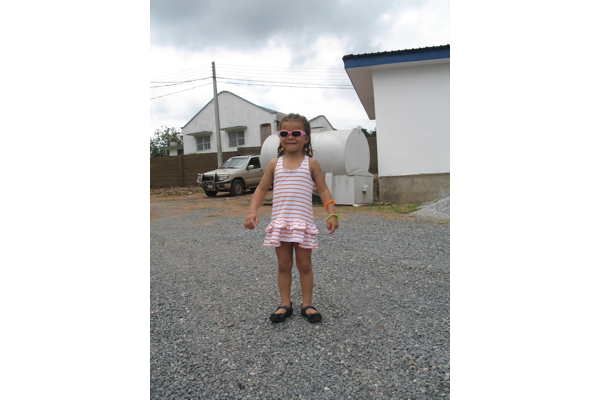Ibadan 2012 (English)
Mission to Nigeria, 24.09-05.10.2012 (Français)
It all began in 2011, with a meeting with Gerard Chouin, director of IFRA, the French Institute for Research in Africa, based in Ibadan. Ibadan is a name that resonates in the ears of a researcher working on Islam. The University of Ibadan has spread light in the world of manuscript research through the Research Bulletin of the Center of Arabic Documentation, which expired in 1994. For me, it was an almost mythical place.
I had spoken to G. Chouin of my research project to study the paper of manuscripts, work which began in Yemen, Centre français d’archéologie et de sciences sociales (CEFAS, Sanaa, http://www.cefas.com.ye/spip.php?article300, http://www.anne.regourd.org/programme-zabid), and was continued in Ethiopia, thanks to the Centre français des études éthiopiennes (CFEE, Addis Ababa, ).
In a way the story began earlier … When my path crossed Dr. Jimoh’s (photo 2), first in Bologna, in September 2002, the International Conference on the manuscripts of the Koran, organized by François Déroche, then in London, in October 2003, the symposium organized by Fahmida Suleman, “Word of God. Art of Man“. Dr. Jimoh, speaking on the manuscripts of Nigeria, held to a decidedly anthropological line of reading.
Dr. Jimoh decided to organize a symposium on manuscripts to celebrate the 50th anniversary and Golden Jubilee of the Institute of African Studies, University of Ibadan, in the centre to which he belongs, the Centre for Arabic Documentation (Programme photo 1). The event was supported by the IFRA (photo 3). Seyni Moumouni, Research Professor at the Institute for Research in Humanities at the University of Niamey Abdou Moumouni (Niger, photo 16) and myself were able to attend thanks to IFRA. I flew while Seyni, following ancient caravan routes, passed through a part of the Sahel by road, then made a short hop by plane.
Many people, interested in the event, came from different states of Nigeria, (photo 4). Dignitaries, scholars, academics, university administrators and students made up the audience, and some were guests at the high table (photo 5). This is the venue for the panel which received the paper of Dr. Jimoh, as well as one of mine, entitled “Features of West African Arabic Manuscripts: their papers.” Among the manuscripts Dr. Jimoh presented was a series of very interesting birth certificates.
There were numerous exchanges between the different panels. On the second day, the Nigerian Ministry of Education had sent a collaborator, who stressed the importance of the study of the Arabic language in the country.
Mujib, the son of Dr. Jimoh, had also been requisitioned for the preparations. The second day, he is always with us, attentive and focused fixing, checking, making sure everything is in order (photo 6).
The public has arrived and is patiently awaiting the panels, the first as well as the second day (photo 7, photo 8, photo 9, photo 10, ). The session resumed. Dr. Jimoh is deep in thought (photo 11), everyone turned towards the contributor (photo 12). Prof.. Mikushi takes the direction of a panel (photo 13), in which I will give my second paper “Methods and Forms of Arabic Manuscript Preservation in West Africa”, followed by one of the many communications of Seyni. He is very absorbed in listening to the first speaker of the panel (photo 14), as always, that Dr. Jimoh (photo 15).
We met many interesting people in Nigeria, among them Seyni Moumouni, whom I have mentioned several times, but also Zalikha’u from the Department of Arabic and Islamic Studies at the University of Maiduguri, who is a specialist of manuscripts in the Fulfulde language (photo 17), and … Miss Françoise who was hard to see in glasses! (photo 18).
Before the very end of the conference, I was obliged set off for another, Hungarian, scene (photo 19).
- Uncategorized
- Comments Off on Ibadan 2012 (English)


